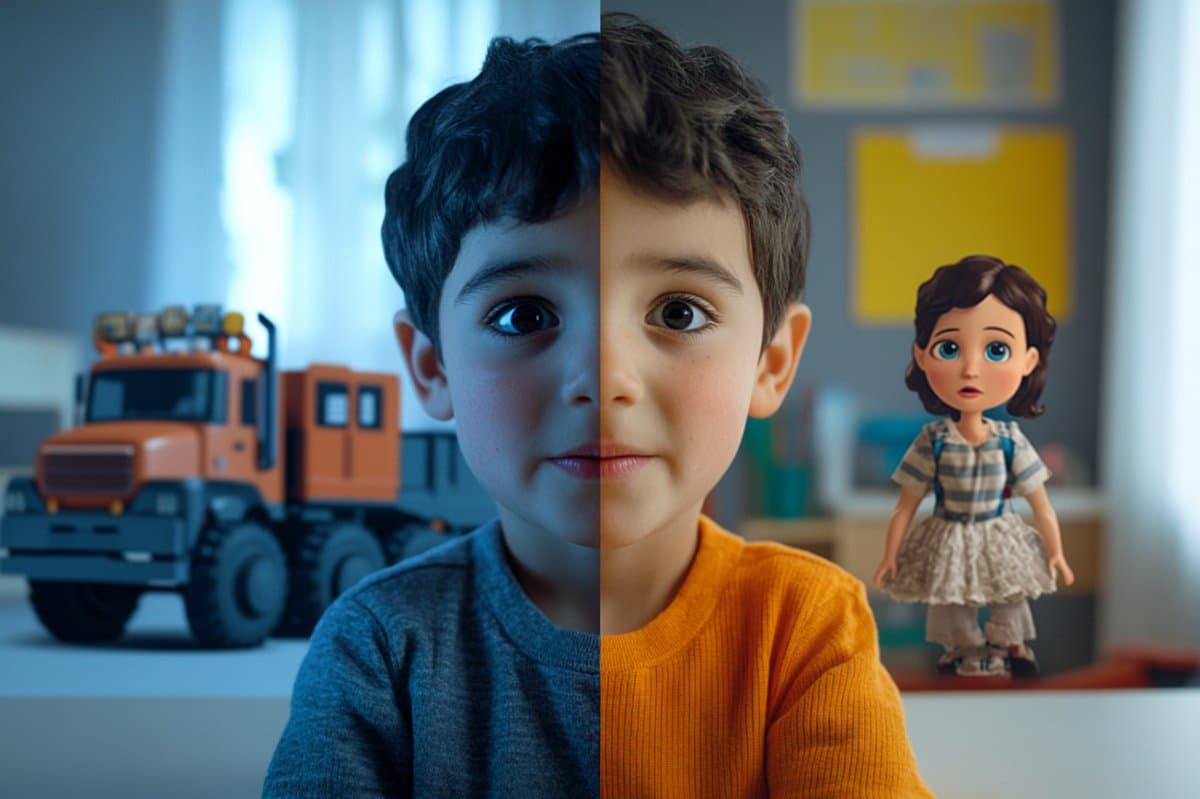Summary: A new international study has revealed that children’s gender biases can be seen not only in what they say, but in how they express emotions on their faces. Researchers in Canada and Hong Kong studied over 600 children aged 4–9, analyzing facial expressions while they watched stories featuring gender-conforming and nonconforming peers.
The children showed significantly more fear when observing boys who displayed behaviors seen as feminine, such as liking dolls or wearing pink. These findings suggest children may internalize social norms early, potentially mimicking fear responses learned from family, peers, or media.
Key Facts:
- Emotional Bias: Children displayed more fear when viewing boys who defied gender norms.
- Cultural Consistency: Results were consistent across Canadian and Hong Kong participants.
- Learning Pathways: The study suggests emotional responses to gender nonconformity may be learned socially.
Source: University of Toronto
New research recently published in Archives of Sexual Behavior suggests children’s gender biases can be reflected in their facial emotional expressions.
Psychology professor Doug VanderLaan and his colleagues at the University of Toronto Mississauga, studied 296 children (148 boys and 148 girls) in Canada between the ages of four and nine years old while Wang Ivy Wong, Karen Kwan and their colleagues at the Chinese University of Hong Kong, and The Hong Kong Polytechnic University studied 309 children (155 boys and 154 girls) in Hong Kong.

All children watched four short stories that included five illustrations with pre-recorded audio narratives. The stories were presented in random order and showed peers who were in the same grade as the participant and displayed behaviours that either did or did not follow gender stereotypes.
While viewing the stories, FaceReader software was used to code the intensities of participants’ emotions, including angry, disgusted, happy, sad, scared, and surprised.
The study found a small effect for one emotional expression (fear), but little to no difference in emotion with the other five. Participants displayed more scared emotion when viewing a boy who wasn’t following societal gender stereotypes in the types of toys, activities, clothes, hairstyles, and friends he preferred.
This fear was correlated with one of five verbal questions, in particular a question related to emotion perception, where children shared that they perceived the feminine-behaving boy as being less happy when compared with the boy who conformed with masculine gender stereotypes.
“These results provide evidence that children’s gender biases are reflected in their facial emotional expressions – specifically showing signs of being scared when it comes to boy peers whose behaviours don’t follow gender stereotypes,” said Doug VanderLaan, an associate professor with the Department of Psychology at the University of Toronto Mississauga.
“Developmentally, children may learn to imitate such fear responses from those who are around them like their peers, family members, and media.”
VanderLaan noted the finding is consistent with other studies highlighting that less positive characteristics are assigned to children whose behaviours don’t follow gender stereotypes, especially when it comes to feminine-behaving boys.
However, for this study in particular, examining facial emotional expressions provided unique insights into the emotional component of peer appraisals.
Overall, the research contributes toward more complete understanding when it comes to children’s gender biases while assessing their peers.
About this neurodevelopment and psychology research news
Author: Julia Le
Source: University of Toronto
Contact: Julia Le – University of Toronto
Image: The image is credited to Neuroscience News
Original Research: Closed access.
“Children’s Facial Emotional Expressions to Gender-Nonconforming Hypothetical Peers” by Doug VanderLaan et al. Archives of Sexual Behavior
Abstract
Children’s Facial Emotional Expressions to Gender-Nonconforming Hypothetical Peers
Prior studies suggested that children’s appraisals of gender-nonconforming, compared with gender-conforming, peers are less positive, particularly for gender-nonconforming boys. To gauge appraisals, most prior studies used verbal reports, which provide explicit measures.
In contrast, the current study explored facial emotional expressions, which can potentially be an objective and implicit measure to inform the emotional component of appraisals.
We examined 4-, 5-, 8-, and 9-year-olds in Hong Kong (n = 309) and Canada (n = 296) (N = 605; 303 boys, 302 girls). Children’s faces were video-recorded while viewing four vignettes of hypothetical gender-conforming and gender-nonconforming boy and girl targets in random order.
Targets were shown as having gendered preferences in the domains of toys, activities, clothing and hairstyle, and playmates. FaceReader software was used to perform automated coding of six basic facial emotional expressions: angry, disgusted, happy, sad, scared, and surprised.
Children showed more scared emotion toward the hypothetical gender-nonconforming boy target when compared with the gender-conforming boy target.
Also, this elevation in scared emotion was correlated with children verbally reporting that they perceived the gender-nonconforming boy as being less happy relative to the gender-conforming boy.
These results suggest that, during a brief initial exposure to a target peer, gender nonconformity in boy peers was related to a relatively heightened fear response in early and middle childhood.
Further, facial emotional expressions can be used to gain insights regarding the emotional component of children’s appraisals of varying peer gender presentations, and these emotional responses can be associated with certain other aspects of their appraisals.







